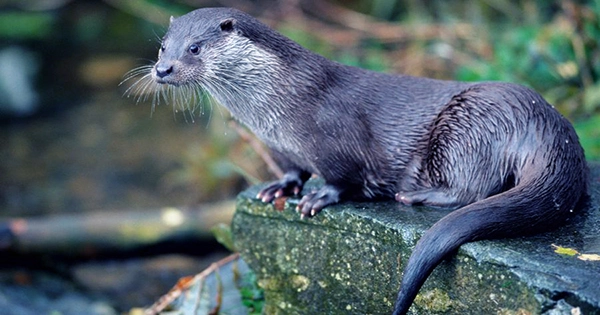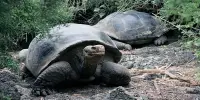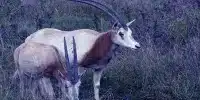Paleontologists gathered several unidentified bones and teeth in the 19th century. Some of these originated from wealthy deposits in Ethiopia that were formed up to 4.5 million years ago. Now, after 150–180 years in storage, some of these fossils have been identified as coming from enormous otters that lived in the region with our ancestors and weighed more than 200 kilograms (440 pounds).
We have a very long way to go until we have a complete skeleton, which is why it took so long to identify the new species. In a report published in the French journal Comptes Rendus Palevol, the authors identify a new species they dubbed Enhydriodon omoensis using two partial jawbones, a few teeth, and a leg bone. They also assign other scattered otter bones discovered at the same locality to the Torolutra genus.
The Pliocene and late Miocene eras are known for having giant otters. When Enhydriodon dikikae was first officially reported in 2011, it was previously said to be the size of a lion, but E. omoensis is even bigger.
The Eurasian otter may be the most well-known of the 13 still alive, but the subfamily includes a surprising variety of sizes. However, the Asia small-clawed otter weighs about 2–6 kilograms (4.4–13.2 pounds), while the North Pacific sea otter can weigh up to a hefty 45 kilos. Eurasian otters normally weigh up to 17 kilograms (37.5 pounds) (99.2 pounds).
At least six species of the extinct Enhydriodon genus are known to have existed in the eastern rift system, and other sites across eastern Africa and occasionally beyond. E. In the Lower Omo Valley of Ethiopia, north of Lake Turkana, where the oldest stone tools were created 3.3 million years ago, omoensis was discovered.
Early humans lived in the region as well because Australopithecine fossils have been discovered in the same Omo formation; Homo Sapiens may have even evolved there. E. Even if it didn’t directly consume them, omoensis would have competed for food with Australopithecines and possibly the earliest humans if it had lived a little longer.
Furthermore, this wasn’t a dangerous animal that our ancestors could avoid by living on land.
Dr. Kevin Uno of Columbia University noted in a statement that “the strange thing, in addition to its gigantic size, is that [isotopes] in its teeth imply it was not aquatic, like all modern otters.” We discovered that it consumed terrestrial creatures as food.
The conclusion is based on the observation that, depending on the growth environment and photosynthetic pathways, plants store various ratios of carbon isotopes. The ratios of the plants that herbivores consume are incorporated into the composition of carnivores, including their bones and teeth.
Other bones discovered in the same strata are certain to belong to the Torolutra genus, which was similar to current river otters and preyed mostly on fish, according to Uno and co-authors. Additionally, they describe a bone fragment that they think originated from a huge Enhydriodon, but they are unable to determine the species.















